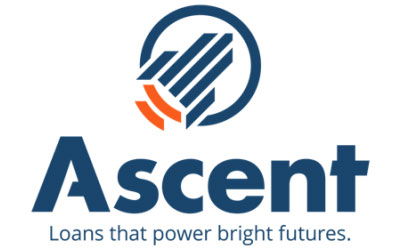Getting federal student aid is the best way to kick-start the funding of your college education. Federal student loans, grants, and work-study jobs are all excellent ways to get the money you need to pay for tuition and other college expenses.
But with costs soaring for American students across the country, federal aid often isn’t enough to cover all your needs.
That’s where private student loans come in.
7 Best Private Student Loans
If you have exhausted all your scholarship, grant, and federal loan options and still need funds, you can work with a private student lender.
Here are the best private student loan lenders of 2025 to help your search get started:
1. SoFi
SoFi doesn’t provide loans directly to students, but they do offer parent student loans. Fixed rates and variable rates both start low, and you can view current rates online.
2. Ascent
For flexible private student loan options, consider Ascent. You can get either a tuition loan that requires a cosigner or an independent loan that’s just for undergraduate or graduate students.
3. Sallie Mae
Offering a broad range of student loans, Sallie Mae can fit many needs. You can get loans for both undergraduate and graduate programs. Sallie Mae also offers parent loans if they’d rather take on the financial burden instead of the student.
4. Custom Choice
For those seeking tailored student loan options, Custom Choice is a solid contender, especially for returning students and upperclassmen. With an option to check eligibility and the rate without a hard credit pull, this lender ensures a hassle-free pre-application experience.
5. Discover
Not only does Discover offer undergraduate and graduate student loans, as well as parent loans, it also rewards students for academic achievement.
6. Citizens Bank
Re-applying for student loans year after year can be frustrating and stressful, and you never know if you will get the funding you need.
7. College Ave
Whether you’re going to undergrad for the first time or back to grad school later in life, College Ave can help you design a student loan tailored to your situation.

When to Use a Private Student Loan
Before turning to private student loans, make sure you’ve exhausted all your federal aid options.
Start by submitting the Free Application for Federal Student Aid (FAFSA) each year. This gives you access to need-based aid like grants—which don’t need to be repaid—as well as federal student loans and work-study programs. Grants are the best kind of aid, but they rarely cover your full cost of attendance.
Next, consider federal loans. They often come with benefits you won’t get from private lenders, including income-driven repayment plans and potential loan forgiveness. You should also search for scholarships through your school, local organizations, or private companies.
Only consider a private student loan after you’ve used all other funding sources. It might take more effort upfront, but covering as much as possible with grants, scholarships, and federal aid can save you thousands in the long run.
Pros & Cons of Private Student Loans
Private student loans can be helpful when federal aid isn’t enough—but they come with trade-offs. Here’s a clear look at the main pros and cons to help you decide if they’re right for you.
Pros
- Higher borrowing limits: Private lenders often allow you to borrow up to the full cost of attendance, which is higher than most federal loan caps. Just note that these limits usually require strong credit.
- Lower interest rates (if you qualify): Borrowers with excellent credit may qualify for lower interest rates than what federal loans offer, especially for graduate students or parent borrowers.
- More flexible enrollment requirements: Federal loans usually require half-time enrollment. Some private lenders will fund students taking just a class or two.
- Choice of fixed or variable rates: Unlike federal loans, private lenders often give you the option to choose between a fixed or variable interest rate. This flexibility can help you tailor the loan to your repayment strategy.
Cons
- No federal protections or repayment options: Private loans don’t offer income-driven repayment plans, federal deferment or forbearance, or forgiveness programs like PSLF. If you lose income or struggle with payments, you’ll be at the mercy of the lender.
- Credit-based approval: Private lenders run a credit check, and most require a score in the mid-600s or higher. If you don’t qualify on your own, you’ll need a cosigner with strong credit.
- Potentially high interest rates: Only top-tier borrowers get the lowest advertised rates. If your credit is less than excellent, you may end up with a much higher interest rate than federal loans offer.
How to Find the Best Private Student Loans
Private student loans vary a lot from lender to lender—so finding the right one means knowing what you need now, and what you might need later.
Define What You Need Now
Start by deciding who will take out the loan—you or a parent. If you’re applying as the student, will you use a cosigner? If not, that narrows your options quickly, since most lenders require good credit.
Next, consider your income while you’re in school. If you won’t have a job or savings, look for lenders that offer deferred payment options. Just keep in mind that interest will still accrue while you’re in school.
Plan for What You Might Need Later
Some lenders offer forbearance or flexible repayment options if you face financial hardship after graduation. That’s important if you don’t have a safety net or a guaranteed job waiting for you.
Since no one can predict the future, build in flexibility where you can. Look for lenders that offer grace periods, income-based options, or deferment—even if you hope never to need them.
Compare the Key Features
When comparing private student loans, focus on the details that will affect you most:
- Interest rate: Fixed rates stay the same over time. Variable rates can change—and sometimes rise significantly.
- Fees: Some lenders charge origination fees that reduce how much you receive. Others skip fees entirely.
- Repayment terms: Shorter terms save you money overall but come with higher monthly payments. Longer terms lower the monthly bill but cost more in the long run.
If your situation changes after graduation, refinancing your student loans is always an option. But it’s better to choose a flexible lender upfront.
Watch for Enrollment and Academic Requirements
Some private lenders require you to maintain half-time or full-time enrollment to keep your loan. Others may expect you to meet certain GPA or academic standards to remain eligible year after year.
Also check how repayment is handled while you’re in school. Deferred payments may sound appealing now, but they can result in a much larger loan balance by the time you graduate.
How to Apply for Private Student Loans
Applying for a private student loan is quite simple. Once you’ve narrowed down the list of banks, credit unions, and online lenders you’d like to work with, you can typically start the application process online. Expect to submit some basic personal information as well as details regarding your upcoming education costs.
You’ll most likely need the following information:
- Contact information
- Social security number
- School and program information, including your expected graduation date
- Requested loan amount and other financial aid you’ve received
- Current financial information, such as income
- Personal contacts
- Cosigner information
Applying with a Cosigner
Most undergraduate students will need to apply with a cosigner to qualify. If you have a cosigner, most lenders will ask for their contact information. Then, they will reach out to the cosigner directly to get more details from them.
Once you submit your application, the lender will review your credit history and, if applicable, your cosigner’s. You’ll then receive a decision on your application. If you’re approved, you’ll see one or more offers.
You can compare how the interest rate and payment amount change with different term and repayment options. Pick one, sign the loan agreement, and your lender will disburse the funds directly to your school.
How to Get Private Student Loans for Bad Credit
Getting a private student loan when your credit score is poor is possible. The reality is, however, you will have to choose from much higher overall loan costs.
The good news is that there are lenders out there offering student loans specifically for borrowers with bad credit. These loans are often easier to qualify for, and some don’t require a credit check at all. Lenders will review alternative lending data, including field of study, grade point average or even estimated future earnings.
Alternatives to Private Student Loans
You might be unsure whether a private student loan is the right option for you. Even if you are certain you’ll go with a private loan, either way it’s good to be aware of these alternative options.
Apply for Grants and Scholarships
Exhausting the avenues for grants and scholarships is hard work, but it could literally pay off. These types of financial aid can help make your education more affordable, and they come with the benefit of never having to be paid off.
Fill Out a FAFSA
Once you’ve sent your college application, make sure to go and complete an application for the Free Application for Federal Student Aid (FAFSA) as soon as possible. This can show you how much federal aid you may be eligible for, and includes both grants and scholarships. This is a great way to gauge your finances and help you prepare in advance if you need a private loan.
Ask About Payment Plans
Your college might offer payment plans that allow you to ease the financial burden of various costs. These plans typically cover direct educational costs, such as tuition, housing and materials. In any case, finding out about possible payment plans is essential.
Live at Home
If possible, you might want to consider living at home while you attend college. This can cut a significant portion of your costs, especially if your commute isn’t huge. Figure out an approximate cost for your commute to see whether living at home could work for you.
Get a Part-Time Job
If it’s a possibility for you, taking on a part-time job could be a huge help when it comes to affording college.
A part-time job can be a great way to help cover personal expenses or supplement a federal loan. In addition to that, your employer may even be willing to cover certain educational expenses, with benefits such as tuition assistance or paid internships.
Frequently Asked Question
What credit score do I need to qualify for a private student loan?
Most private lenders require a credit score of at least 650, but the best rates are usually reserved for borrowers with scores of 720 or higher. If you’re a student with limited or no credit history, applying with a creditworthy cosigner can significantly improve your chances of approval and help you secure a lower interest rate.
Can I use a private student loan to cover non-tuition expenses?
Yes. Private student loans can generally be used for any education-related expense. This includes housing, meal plans, textbooks, laptops, transportation, and other costs associated with attending school. Be sure to check with your specific lender to confirm what expenses are eligible.
Are private student loans eligible for forgiveness or cancellation?
No. Private student loans are not eligible for federal forgiveness programs like Public Service Loan Forgiveness (PSLF) or income-driven repayment forgiveness. Once you take out a private loan, you are fully responsible for repaying it according to the terms of your lender.
What happens to my private student loan if I drop out of school?
If you drop below half-time enrollment or leave school entirely, most private lenders will require you to start repayment after a short grace period—typically six months. You may lose any deferment options tied to school enrollment, so it’s important to contact your lender immediately to understand your repayment obligations.
Can I switch lenders after taking out a private student loan?
You can’t switch lenders on an existing loan, but you can refinance your loan with a new lender. Refinancing allows you to replace your current loan with a new one—potentially with a lower interest rate, better repayment terms, or a release from your cosigner. However, you’ll need strong credit or a qualifying cosigner to be approved for refinancing.










